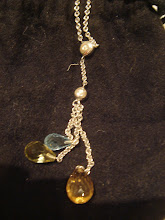When war broke out in September 1939, my mother had just celebrated her 25th birthday. Girlfriends joined the WAAF and the WRENS, but she knew what she was going to do: she was going to join the Women's Land Army.
Farmers were incentivised to grow more to avoid food shortages, Between May and September 1939, they were paid £2 for every acre of grassland that they ploughed up, for the Battle for Wheat. Two million acres of additional grassland were ploughed in time for the 1940 harvest. The shortfall of 50,000 agricultural workers was to be filled by women and the WLA was formed on June 1st 1939. The farming community thought it was a joke.
Girls were interviewed to see if they were suitable, given a medical examination and enrolled. The official minimum age was 17. Some lied and became Land Girls at 16 or even younger. It wasn't hard to get into the WLA. One girl who wore glasses, was asked to read a sheet of letters of diminishing size. As she struggled with the smaller letters, the doctor said Never mind, I suspect you'd see a charging bull and passed her.

Land Girls had a uniform for healthy, outdoor living. Not for them the smart jackets and nylons. In fact, nothing attractive and everything too big. For "walking out" they wore laced brown brogue shoes, baggy brown corduroy breeches and knee length fawn socks. A green V-necked long-sleeved ribbed jumper was worn over a fawn aertex shirt, with the WLA tie for formal wear! On their heads they wore brown felt pork-pie style hats. A three-quarter length waterproof brown overcoat finished the outfit. At five foot tall, my mother looked like a mobile brown paper package.

Brown dungarees, a matching jacket and wellington boots were issued for work clothes. The dungarees served in the garden through the 1950s and I had all the spare bits of uniform for dressing up. I cut a fine figure in the WLA jacket, breeches with her gas mask on back to front as I yomped through the undergrowth at the end of the garden. The socks were particularly hard-wearing and they survived to be Christmas stockings.
Land Girls were paid a minimum wage of 28 shillings (£1.40) a week, half of which was normally deducted for board and lodgings. If a girl was working more than 20 miles from home, she was entitled to a free journey home after six months. There was no holiday entitlement, paid or unpaid. It was left up to individual farmers to decide when a girl could take time off. They were expected to work 48 hours a week in winter and 50 hours a week in summer, but most girls worked many more, especially during harvest.
Mainly, Land Girls lived in lodgings near or on the farms where they'd been allocated. Mam was sent to Treberfydd Estate next to Llangorse Lake. It was a grand house with a home farm and several tenant farms. They thought that these Land Girls would be just extra pairs of hands in the garden or milking parlour. She was housed in a dormitory with the maids at the top of the house and put to work with the Head Gardener. On her first day he sent her to mow the lawn and the mower ran away with her. He stopped her just before she landed in the lake. Just another silly girl who knew nothing about the countryside.

Farm machinery was made for and operated by fit men, used to the physical requirements of the job. She was so petite that she struggled to even get onto a horse, needing an orange box on top of the mounting box .
This was Kit and he was her best friend until she made friends with a local family at Cathedine. But this was going to be the best of times: she determined to make the best of life in the countryside and her friends were friends for life.

While away in the 1930s, she had learned to drive, unusual for a woman. She took to the tractor like a duck to water and could turn in awkward field ends and get through gates without mishap. By the harvest of 1941, she was the main tractor driver on the farm. The brand new Massey was hers!
At the end of the war, the WLA was still required for several years until the male agricultural workers returned to the land. On October 21st 1950, the WLA was officially disbanded. The National Farmers' Union protested. The women had turned out not to be such a joke after all.
In 2008, the Land Girls were recognised with a special badge. Surviving Land Girls were eligible to apply for the badge or their relatives could apply on their behalf if they had died after the badge was announced.
Sadly, my mother died in 2002 so I was not able to apply for her badge.

So this is for her.















What a charming tribute to your mum. The country owes so much to the women who kept us going while the men were away at war.
ReplyDeleteStories like these make us remember what a comparively cushy life most of us lead these days.
I've read this a couple times now. Really great, and I see so much of how one person can change things for so many.
ReplyDeleteWhat a lovely tribute. I am sure she will be looking down and smiling.xx
ReplyDelete